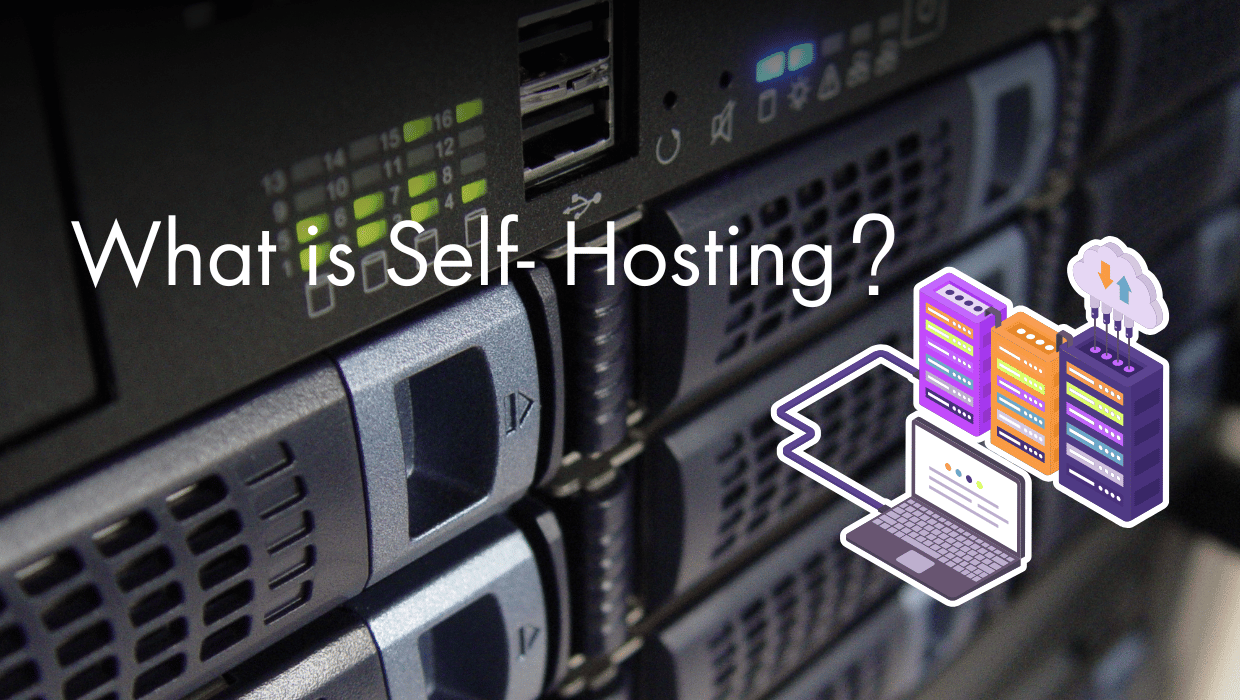What is Self-hosting?
Self-hosting is when you host applications on your own server infrastructure, managing your own databases, and maintaining complete control over your digital environment. Unlike relying on third-party services that can change terms, increase prices, or even shut down without notice, self-hosting puts you firmly in the driver's seat of your digital experience.What is a Self-hosted Website?
A self-hosted website is one you host on your own server infrastructure rather than relying on third-party hosting services. This gives you complete control over your databases, web architecture, design, and most importantly, your data. Although a self-hosted website does offer unparalleled freedom and privacy benefits, the main drawback is taking full responsibility for security, maintenance, and technical troubleshooting, and these tasks are normally handled by hosting providers.What is a Self-hosted Application?
A self-hosted application runs on your own server rather than cloud platforms. You maintain control over the app's databases, configurations, and update schedules. This offers privacy, customization flexibility, and freedom from subscription fees, though it requires technical knowledge to manage security, backups, and scaling. Popular examples include Mailcow for email management, Nextcloud for file storage and collaboration, among many other.Get Started With Self-hosting on a VPS
While self-hosting gives you ultimate control over your digital life, it's significantly easier when you start with the right infrastructure. From my extensive testing, a reliable VPS is the perfect foundation for beginners and advanced users alike. If you're ready to take the self-hosting plunge, our high-performance VPS servers deploy instantly. Don't compromise your digital independence with inadequate infrastructure. See our self-hosting optimized plans →
Self-hosting Overview
 Do you have an email account you log into every day? A to-do app? Maybe you have a folder in the cloud where you store and synchronize your files? You probably have a dozen of such services you use regularly. Web applications (web apps), particularly in the software as a service (SaaS) model, are so standard we barely even think about them anymore. They’re just part of our daily lives.
For reasons we’ll get into in a minute, people are choosing to take control of their web experiences, and the data they give them, through self-hosting.
You might be asking: “Is self-hosting complicated? Is it hard? Why does it sound like being the only person who shows up for your own birthday party?”
Don’t worry — we’ll answer your questions in a minute. When it comes to friends, you’re on your own.
Do you have an email account you log into every day? A to-do app? Maybe you have a folder in the cloud where you store and synchronize your files? You probably have a dozen of such services you use regularly. Web applications (web apps), particularly in the software as a service (SaaS) model, are so standard we barely even think about them anymore. They’re just part of our daily lives.
For reasons we’ll get into in a minute, people are choosing to take control of their web experiences, and the data they give them, through self-hosting.
You might be asking: “Is self-hosting complicated? Is it hard? Why does it sound like being the only person who shows up for your own birthday party?”
Don’t worry — we’ll answer your questions in a minute. When it comes to friends, you’re on your own.
The Standard App Structure
Before we define self-hosting clearly, we need to quickly explain what a web app is, and how it works. For this discussion about self-hosting, a web app consists of a frontend, a backend, and storage. In reality, it’s more complex than that, but let’s keep it simple. The frontend is the presentation, or user interface, of the web app — it’s what you look at and click on to make it do what you want. Developers use HTML, CSS, and JavaScript to create frontends, and while these interfaces are the only part of a web app that you interact with directly, they’re only a small piece of the puzzle. The backend is both the brain and the messenger of the web app. It lives on a server, is written in one of many different languages, such as Node.js, Ruby, Python, Java, PHP, and others.A backend not only relays information between the user and the storage but also makes important decisions, such as whether or not you entered your password correctly and how much information you should be seeing.The storage is both information and files. Information goes into databases, which are similar to spreadsheets — lots of little cells holding a number or a piece of text. Files — which can include videos, photos, documents, gifs, your
Continue reading this article
by subscribing to our newsletter.
Subscribe nowby subscribing to our newsletter.




